
aspergers1044
My First Tumblr Blog
126 posts
Latest Posts by aspergers1044
HALLOWEEN
Throughout the COSMOS!
With Halloween just around the corner, NASA has released its latest Galaxy of Horrors posters. Presented in the style of vintage horror movie advertisements. As fun and creative as all three posters are, they're based on real phenomena. 🎃
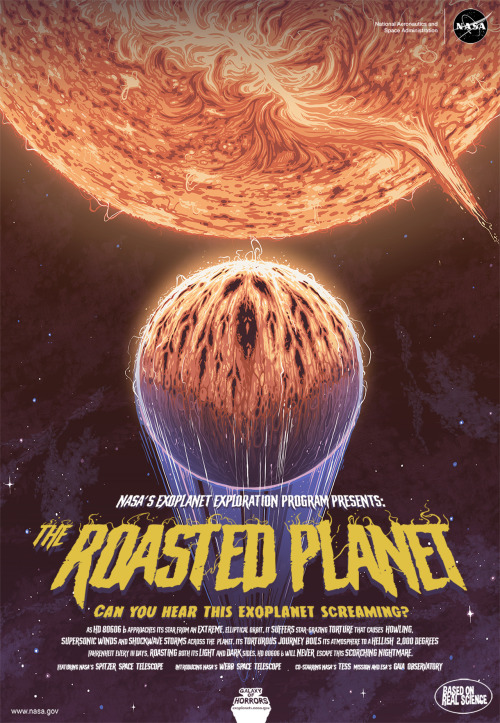
Can you hear this exoplanet screaming?
As HD 80606 b approaches its star from an extreme, elliptical orbit, it suffers star-grazing torture that causes howling, supersonic winds and shockwave storms across the planet. Its torturous journey boils its atmosphere to a hellish 2,000 degrees Fahrenheit every 111 days, roasting both its light and dark sides. HD 80606b will never escape this scorching nightmare.
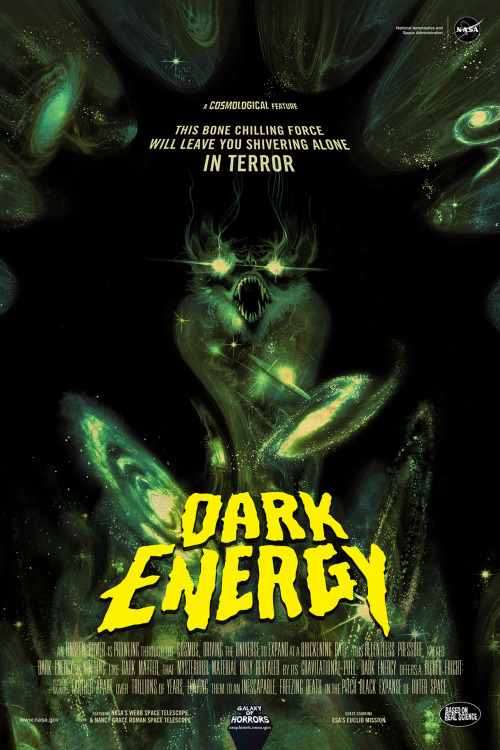
This bone-chilling force will leave you shivering alone in terror!
An unseen power is prowling throughout the cosmos, driving the universe to expand at a quickening rate. This relentless pressure, called dark energy, is nothing like dark matter, that mysterious material only revealed by its gravitational pull. Dark energy offers a bigger fright: pushing galaxies farther apart over trillions of years, leaving the universe to an inescapable, freezing death in the pitch black expanse of outer space.
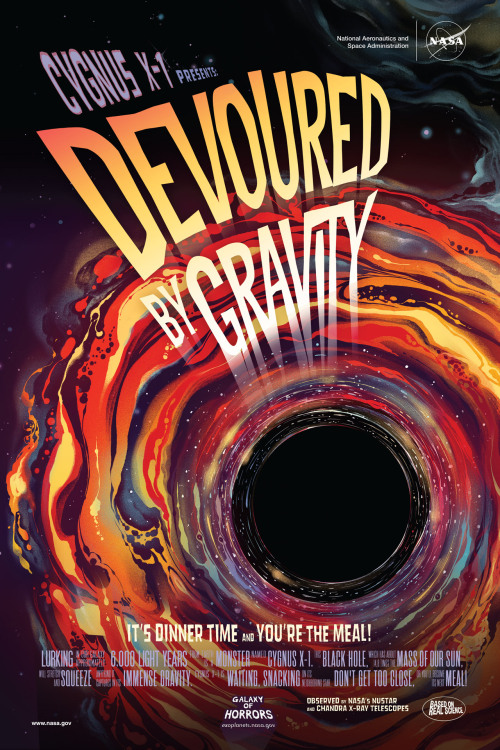
Cygnus X-1 Presents:
It’s Dinner Time and You’re The Meal!
Lurking in our galaxy, approximately 6,000 light-years from Earth, is a monster named CygnusX-1. This black hole, which has about 14.8 times the mass of our Sun, will stretch and squeeze anything it captures in its immense gravity. Cygnus X-1 is waiting, snacking on its neighboring star. Don’t get too close, or you’ll become its next meal!
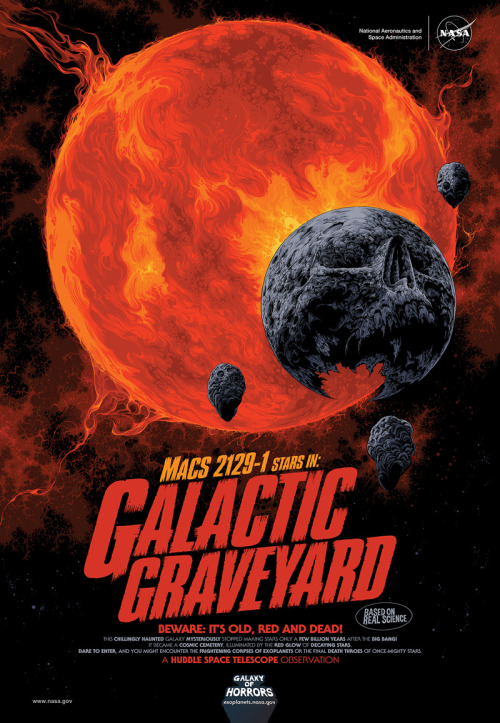
This chillingly haunted galaxy mysteriously stopped making stars only a few billion years after the Big Bang! It became a cosmic cemetery, illuminated by the red glow of decaying stars. Dare to enter, and you might encounter the frightening corpses of exoplanets or the final death throes of once-mighty stars.

Something strange and mysterious creeps throughout the cosmos. Scientists call it dark matter. It is scattered in an intricate web that forms the skeleton of our universe. Dark matter is invisible, only revealing its presence by pushing and pulling on objects we can see. NASA’s Roman Space Telescope will investigate its secrets. What will be revealed?
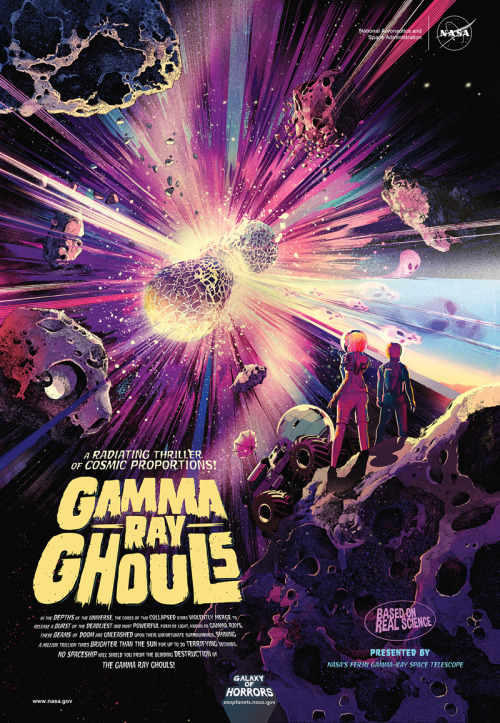
In the depths of the universe, the cores of two collapsed stars violently merge to release a burst of the deadliest and most powerful form of light, known as gamma rays. These beams of doom are unleashed upon their unfortunate surroundings, shining a million trillion times brighter than the Sun for up to 30 terrifying seconds. No spaceship will shield you from the blinding destruction of the gamma ray ghouls!
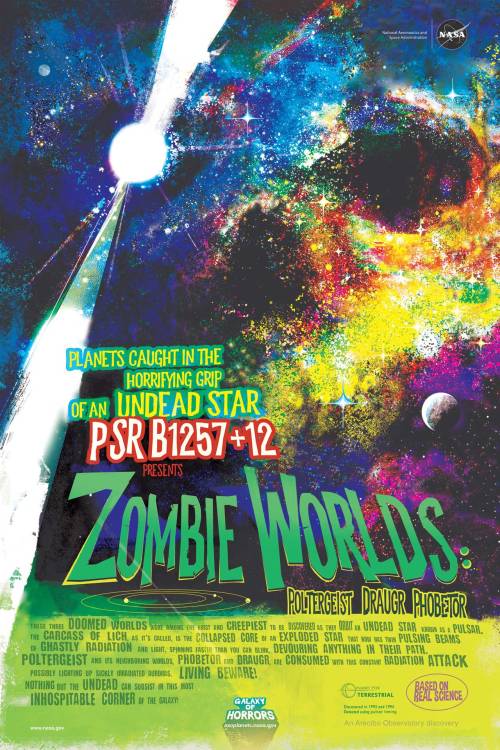
These doomed worlds were among the first and creepiest to be discovered as they orbit an undead star known as a pulsar. Pulsar planets like Poltergeist and its neighboring worlds, Phobetor and Draugr, are consumed with constant radiation from the star’s core. Nothing but the undead can subsist in this most inhospitable corner of the galaxy.
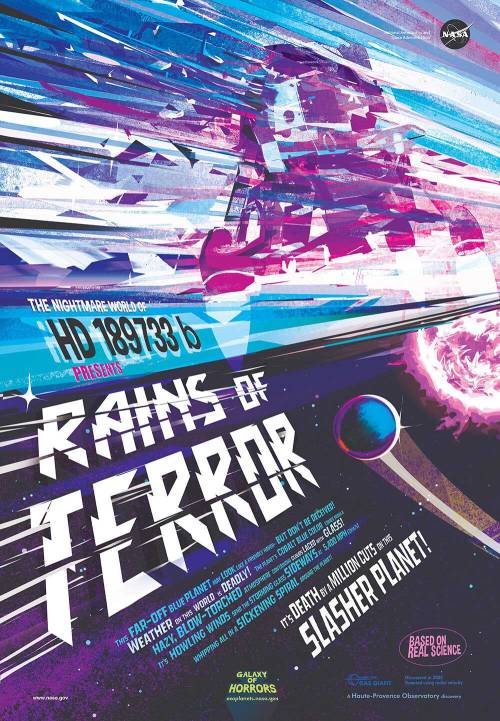
This far-off blue planet may look like a friendly haven – but don’t be deceived! Weather here is deadly. The planet’s cobalt blue color comes from a hazy, blow-torched atmosphere containing clouds laced with glass. Howling winds send the storming glass sideways at 5,400 mph (2km/s), whipping all in a sickening spiral. It’s death by a million cuts on this slasher planet!
Different Types of Supernovae are the Primary Origins of Different Classes of Chemical_Elements.
You Are Made of Stardust
Though the billions of people on Earth may come from different areas, we share a common heritage: we are all made of stardust! From the carbon in our DNA to the calcium in our bones, nearly all of the elements in our bodies were forged in the fiery hearts and death throes of stars.
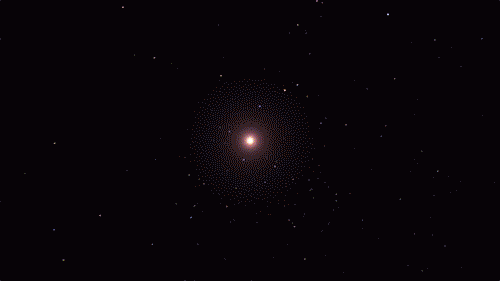
The building blocks for humans, and even our planet, wouldn’t exist if it weren’t for stars. If we could rewind the universe back almost to the very beginning, we would just see a sea of hydrogen, helium, and a tiny bit of lithium.
The first generation of stars formed from this material. There’s so much heat and pressure in a star’s core that they can fuse atoms together, forming new elements. Our DNA is made up of carbon, hydrogen, oxygen, nitrogen, and phosphorus. All those elements (except hydrogen, which has existed since shortly after the big bang) are made by stars and released into the cosmos when the stars die.

Each star comes with a limited fuel supply. When a medium-mass star runs out of fuel, it will swell up and shrug off its outer layers. Only a small, hot core called a white dwarf is left behind. The star’s cast-off debris includes elements like carbon and nitrogen. It expands out into the cosmos, possibly destined to be recycled into later generations of stars and planets. New life may be born from the ashes of stars.
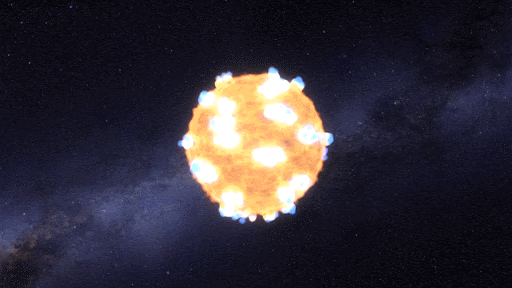
Massive stars are doomed to a more violent fate. For most of their lives, stars are balanced between the outward pressure created by nuclear fusion and the inward pull of gravity. When a massive star runs out of fuel and its nuclear processes die down, it completely throws the star out of balance. The result? An explosion!
Supernova explosions create such intense conditions that even more elements can form. The oxygen we breathe and essential minerals like magnesium and potassium are flung into space by these supernovas.
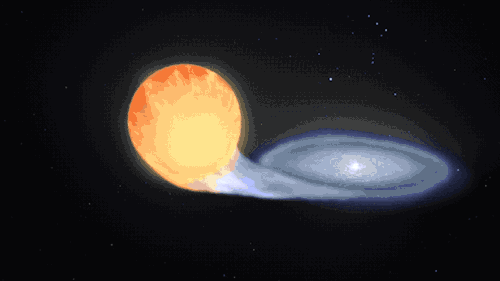
Supernovas can also occur another way in binary, or double-star, systems. When a white dwarf steals material from its companion, it can throw everything off balance too and lead to another kind of cataclysmic supernova. Our Nancy Grace Roman Space Telescope will study these stellar explosions to figure out what’s speeding up the universe’s expansion.
This kind of explosion creates calcium – the mineral we need most in our bodies – and trace minerals that we only need a little of, like zinc and manganese. It also produces iron, which is found in our blood and also makes up the bulk of our planet’s mass!

A supernova will either leave behind a black hole or a neutron star – the superdense core of an exploded star. When two neutron stars collide, it showers the cosmos in elements like silver, gold, iodine, uranium, and plutonium.

Some elements only come from stars indirectly. Cosmic rays are nuclei (the central parts of atoms) that have been boosted to high speed by the most energetic events in the universe. When they collide with atoms, the impact can break them apart, forming simpler elements. That’s how we get boron and beryllium – from breaking star-made atoms into smaller ones.
Half a dozen other elements are created by radioactive decay. Some elements are radioactive, which means their nuclei are unstable. They naturally break down to form simpler elements by emitting radiation and particles. That’s how we get elements like radium. The rest are made by humans in labs by slamming atoms of lighter elements together at super high speeds to form heavier ones. We can fuse together elements made by stars to create exotic, short-lived elements like seaborgium and einsteinium.
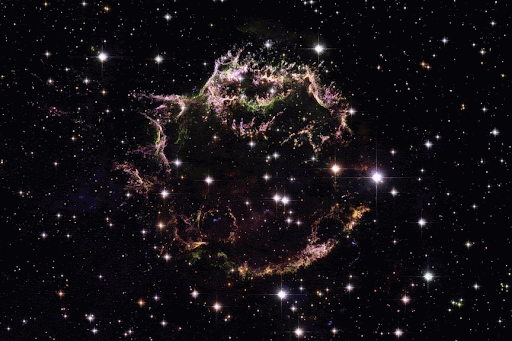
From some of the most cataclysmic events in the cosmos comes all of the beauty we see here on Earth. Life, and even our planet, wouldn’t have formed without them! But we still have lots of questions about these stellar factories.
In 2006, our Stardust spacecraft returned to Earth containing tiny particles of interstellar dust that originated in distant stars, light-years away – the first star dust to ever be collected from space and returned for study. You can help us identify and study the composition of these tiny, elusive particles through our Stardust@Home Citizen Science project.
Our upcoming Roman Space Telescope will help us learn more about how elements were created and distributed throughout galaxies, all while exploring many other cosmic questions. Learn more about the exciting science this mission will investigate on Twitter and Facebook.
Make sure to follow us on Tumblr for your regular dose of space!
The Astronomical Discovery of BUCKYBALLS in The Small Magellanic Cloud back in The_Year of 2010.
IT'S TIME AGAIN TO TAKE A CENSUS OF THE U.S. POPULATION.
MAKE SURE THAT YOU'RE COUNTED!
2020 Census: Everyone Counts
It’s that time again. Census time! Once every ten years the federal government counts every single person living in the U.S. of A. in order to effectively allocate representation and resources across the country. It’s an ambitious endeavor, for sure, but one designed to benefit everyone by making sure each community can adequately fund crucial public goods and services, like roads, hospitals, and schools. It determines how many seats each state gets in the U.S. House of Representatives. Also, congressional and state legislative boundaries are drawn and redrawn based on the data collected. Political representation at the state and federal level hinges on census participation. That’s a big deal!
The census count kicked off in March, with its biggest push for people to respond on their own in April, a.k.a. tax month. Although people in the U.S. pay federal income taxes every year, only once every decade do we have the power to influence how those dollars come back to us
The census is a nine-part questionnaire that takes just 10 minutes to complete. To combat all the misinformation flying around about what the census is and how the collected data is used, we’re gonna bust some of the myths and answer a few of the frequently asked questions:
Is there a citizenship question?
No. The courts have permanently blocked asking respondent their citizenship status and the courts have permanently blocked the Trump administration from adding one. Furthermore, federal law prohibits the Census Bureau from sharing individual census information with any person, organization or government body, including law enforcement. Your responses can only be used for statistical purposes (individual records are released only after 72 years!).
What will you be asked?
The questionnaire asks for basic demographic information such as age, race, type of housing, etc. It will not ask for compromising or sensitive information like social security numbers, bank account numbers, or immigration status.
Who should be counted on the Census?
Every person living in the United States, regardless of citizenship status, including kids and babies!
How can I take the Census?
Great news! Completing the census questionnaire is literally the easiest it’s ever been. For the first time ever, you can complete the census online at 2020Census.gov or by phone at 844-330-2020. Also, by April 1st, every home will receive a mailed notice to participate in the 2020 Census.
When is the deadline?
Ideally, Uncle Sam would like to receive your data by April 30th. But as of right now, you can respond on your own all the way until mid-August. If you don’t respond on your own by the end of May, a Census worker may come to your home and ask to record your answers in person. And while it was funny on screen, please do not behave like Christopher Walken in this classic SNL Census sketch.
Is it safe?
Yes. The census is safe, your information is handled with the utmost confidentiality meaning that no one can take your data and use it against you. Your individual data will not be shared with any person, organization or government body, including other federal agencies or any law enforcement or housing authorities. It’s to your benefit to participate.
Sure, filling out a form sounds boring, but it helps to think of it as an opportunity to make your voices heard in a way that really matters. That sounds exciting, no? Plus, you only have to spend 10 minutes doing it once every 10 years.
Make sure to pass this information to your friends and family in order to stop the spread of misinformation. If you have any questions, please check out the United States Census Bureau Fact Sheet.
Please visit 2020census.gov for more information.

December 17th of 2019 is The Launch Date of The CHEOPS_Mission to measure The Radii of EXOPLANETS Which have already been discovered by now.
This is The Smallest Sized EXOPLANET Discovered by NASA's TRANSITING EXOPLANET SURVEY SATELLITE so far!
NASA's TESS mission finds its smallest planet yet
NASA’s Transiting Exoplanet Survey Satellite (TESS) has discovered a world between the sizes of Mars and Earth orbiting a bright, cool, nearby star. The planet, called L 98-59b, marks the tiniest discovered by TESS to date.

Two other worlds orbit the same star. While all three planets’ sizes are known, further study with other telescopes will be needed to determine if they have atmospheres and, if so, which gases are present. The L 98-59 worlds nearly double the number of small exoplanets – that is, planets beyond our solar system – that have the best potential for this kind of follow-up.
“The discovery is a great engineering and scientific accomplishment for TESS,” said Veselin Kostov, an astrophysicist at NASA’s Goddard Space Flight Center in Greenbelt, Maryland, and the SETI Institute in Mountain View, California. “For atmospheric studies of small planets, you need short orbits around bright stars, but such planets are difficult to detect. This system has the potential for fascinating future studies.”
A paper on the findings, led by Kostov, was published in the June 27 issue of The Astronomical Journal.
Keep reading

This could be The First Confirmed Astronomical Discovery of an Extrasolar_Moon more than 20_Years after The First Confirmed Astronomical Discovery of an Extrasolar_Planet was made!
Here are 10_Things that Einstein got right.
10 Things Einstein Got Right
One hundred years ago, on May 29, 1919, astronomers observed a total solar eclipse in an ambitious effort to test Albert Einstein’s general theory of relativity by seeing it in action. Essentially, Einstein thought space and time were intertwined in an infinite “fabric,” like an outstretched blanket. A massive object such as the Sun bends the spacetime blanket with its gravity, such that light no longer travels in a straight line as it passes by the Sun.
This means the apparent positions of background stars seen close to the Sun in the sky – including during a solar eclipse – should seem slightly shifted in the absence of the Sun, because the Sun’s gravity bends light. But until the eclipse experiment, no one was able to test Einstein’s theory of general relativity, as no one could see stars near the Sun in the daytime otherwise.
The world celebrated the results of this eclipse experiment— a victory for Einstein, and the dawning of a new era of our understanding of the universe.
General relativity has many important consequences for what we see in the cosmos and how we make discoveries in deep space today. The same is true for Einstein’s slightly older theory, special relativity, with its widely celebrated equation E=mc². Here are 10 things that result from Einstein’s theories of relativity:

1. Universal Speed Limit
Einstein’s famous equation E=mc² contains “c,” the speed of light in a vacuum. Although light comes in many flavors – from the rainbow of colors humans can see to the radio waves that transmit spacecraft data – Einstein said all light must obey the speed limit of 186,000 miles (300,000 kilometers) per second. So, even if two particles of light carry very different amounts of energy, they will travel at the same speed.
This has been shown experimentally in space. In 2009, our Fermi Gamma-ray Space Telescope detected two photons at virtually the same moment, with one carrying a million times more energy than the other. They both came from a high-energy region near the collision of two neutron stars about 7 billion years ago. A neutron star is the highly dense remnant of a star that has exploded. While other theories posited that space-time itself has a “foamy” texture that might slow down more energetic particles, Fermi’s observations found in favor of Einstein.

2. Strong Lensing
Just like the Sun bends the light from distant stars that pass close to it, a massive object like a galaxy distorts the light from another object that is much farther away. In some cases, this phenomenon can actually help us unveil new galaxies. We say that the closer object acts like a “lens,” acting like a telescope that reveals the more distant object. Entire clusters of galaxies can be lensed and act as lenses, too.
When the lensing object appears close enough to the more distant object in the sky, we actually see multiple images of that faraway object. In 1979, scientists first observed a double image of a quasar, a very bright object at the center of a galaxy that involves a supermassive black hole feeding off a disk of inflowing gas. These apparent copies of the distant object change in brightness if the original object is changing, but not all at once, because of how space itself is bent by the foreground object’s gravity.
Sometimes, when a distant celestial object is precisely aligned with another object, we see light bent into an “Einstein ring” or arc. In this image from our Hubble Space Telescope, the sweeping arc of light represents a distant galaxy that has been lensed, forming a “smiley face” with other galaxies.

3. Weak Lensing
When a massive object acts as a lens for a farther object, but the objects are not specially aligned with respect to our view, only one image of the distant object is projected. This happens much more often. The closer object’s gravity makes the background object look larger and more stretched than it really is. This is called “weak lensing.”
Weak lensing is very important for studying some of the biggest mysteries of the universe: dark matter and dark energy. Dark matter is an invisible material that only interacts with regular matter through gravity, and holds together entire galaxies and groups of galaxies like a cosmic glue. Dark energy behaves like the opposite of gravity, making objects recede from each other. Three upcoming observatories – Our Wide Field Infrared Survey Telescope, WFIRST, mission, the European-led Euclid space mission with NASA participation, and the ground-based Large Synoptic Survey Telescope — will be key players in this effort. By surveying distortions of weakly lensed galaxies across the universe, scientists can characterize the effects of these persistently puzzling phenomena.
Gravitational lensing in general will also enable NASA’s James Webb Space telescope to look for some of the very first stars and galaxies of the universe.

4. Microlensing
So far, we’ve been talking about giant objects acting like magnifying lenses for other giant objects. But stars can also “lens” other stars, including stars that have planets around them. When light from a background star gets “lensed” by a closer star in the foreground, there is an increase in the background star’s brightness. If that foreground star also has a planet orbiting it, then telescopes can detect an extra bump in the background star’s light, caused by the orbiting planet. This technique for finding exoplanets, which are planets around stars other than our own, is called “microlensing.”
Our Spitzer Space Telescope, in collaboration with ground-based observatories, found an “iceball” planet through microlensing. While microlensing has so far found less than 100 confirmed planets, WFIRST could find more than 1,000 new exoplanets using this technique.

5. Black Holes
The very existence of black holes, extremely dense objects from which no light can escape, is a prediction of general relativity. They represent the most extreme distortions of the fabric of space-time, and are especially famous for how their immense gravity affects light in weird ways that only Einstein’s theory could explain.
In 2019 the Event Horizon Telescope international collaboration, supported by the National Science Foundation and other partners, unveiled the first image of a black hole’s event horizon, the border that defines a black hole’s “point of no return” for nearby material. NASA’s Chandra X-ray Observatory, Nuclear Spectroscopic Telescope Array (NuSTAR), Neil Gehrels Swift Observatory, and Fermi Gamma-ray Space Telescope all looked at the same black hole in a coordinated effort, and researchers are still analyzing the results.

6. Relativistic Jets
This Spitzer image shows the galaxy Messier 87 (M87) in infrared light, which has a supermassive black hole at its center. Around the black hole is a disk of extremely hot gas, as well as two jets of material shooting out in opposite directions. One of the jets, visible on the right of the image, is pointing almost exactly toward Earth. Its enhanced brightness is due to the emission of light from particles traveling toward the observer at near the speed of light, an effect called “relativistic beaming.” By contrast, the other jet is invisible at all wavelengths because it is traveling away from the observer near the speed of light. The details of how such jets work are still mysterious, and scientists will continue studying black holes for more clues.

7. A Gravitational Vortex
Speaking of black holes, their gravity is so intense that they make infalling material “wobble” around them. Like a spoon stirring honey, where honey is the space around a black hole, the black hole’s distortion of space has a wobbling effect on material orbiting the black hole. Until recently, this was only theoretical. But in 2016, an international team of scientists using European Space Agency’s XMM-Newton and our Nuclear Spectroscopic Telescope Array (NUSTAR) announced they had observed the signature of wobbling matter for the first time. Scientists will continue studying these odd effects of black holes to further probe Einstein’s ideas firsthand.
Incidentally, this wobbling of material around a black hole is similar to how Einstein explained Mercury’s odd orbit. As the closest planet to the Sun, Mercury feels the most gravitational tug from the Sun, and so its orbit’s orientation is slowly rotating around the Sun, creating a wobble.

8. Gravitational Waves
Ripples through space-time called gravitational waves were hypothesized by Einstein about 100 years ago, but not actually observed until recently. In 2016, an international collaboration of astronomers working with the Laser Interferometer Gravitational-Wave Observatory (LIGO) detectors announced a landmark discovery: This enormous experiment detected the subtle signal of gravitational waves that had been traveling for 1.3 billion years after two black holes merged in a cataclysmic event. This opened a brand new door in an area of science called multi-messenger astronomy, in which both gravitational waves and light can be studied.
For example, our telescopes collaborated to measure light from two neutron stars merging after LIGO detected gravitational wave signals from the event, as announced in 2017. Given that gravitational waves from this event were detected mere 1.7 seconds before gamma rays from the merger, after both traveled 140 million light-years, scientists concluded Einstein was right about something else: gravitational waves and light waves travel at the same speed.

9. The Sun Delaying Radio Signals
Planetary exploration spacecraft have also shown Einstein to be right about general relativity. Because spacecraft communicate with Earth using light, in the form of radio waves, they present great opportunities to see whether the gravity of a massive object like the Sun changes light’s path.
In 1970, our Jet Propulsion Laboratory announced that Mariner VI and VII, which completed flybys of Mars in 1969, had conducted experiments using radio signals — and also agreed with Einstein. Using NASA’s Deep Space Network (DSN), the two Mariners took several hundred radio measurements for this purpose. Researchers measured the time it took for radio signals to travel from the DSN dish in Goldstone, California, to the spacecraft and back. As Einstein would have predicted, there was a delay in the total roundtrip time because of the Sun’s gravity. For Mariner VI, the maximum delay was 204 microseconds, which, while far less than a single second, aligned almost exactly with what Einstein’s theory would anticipate.
In 1979, the Viking landers performed an even more accurate experiment along these lines. Then, in 2003 a group of scientists used NASA’s Cassini Spacecraft to repeat these kinds of radio science experiments with 50 times greater precision than Viking. It’s clear that Einstein’s theory has held up!

10. Proof from Orbiting Earth
In 2004, we launched a spacecraft called Gravity Probe B specifically designed to watch Einstein’s theory play out in the orbit of Earth. The theory goes that Earth, a rotating body, should be pulling the fabric of space-time around it as it spins, in addition to distorting light with its gravity.
The spacecraft had four gyroscopes and pointed at the star IM Pegasi while orbiting Earth over the poles. In this experiment, if Einstein had been wrong, these gyroscopes would have always pointed in the same direction. But in 2011, scientists announced they had observed tiny changes in the gyroscopes’ directions as a consequence of Earth, because of its gravity, dragging space-time around it.

BONUS: Your GPS! Speaking of time delays, the GPS (global positioning system) on your phone or in your car relies on Einstein’s theories for accuracy. In order to know where you are, you need a receiver – like your phone, a ground station and a network of satellites orbiting Earth to send and receive signals. But according to general relativity, because of Earth’s gravity curving spacetime, satellites experience time moving slightly faster than on Earth. At the same time, special relativity would say time moves slower for objects that move much faster than others.
When scientists worked out the net effect of these forces, they found that the satellites’ clocks would always be a tiny bit ahead of clocks on Earth. While the difference per day is a matter of millionths of a second, that change really adds up. If GPS didn’t have relativity built into its technology, your phone would guide you miles out of your way!
Make sure to follow us on Tumblr for your regular dose of space: http://nasa.tumblr.com.
We Found the Universe’s First Type of Molecule

For decades, astronomers searched the cosmos for what is thought to be the first kind of molecule to have formed after the Big Bang. Now, it has finally been found. The molecule is called helium hydride. It’s made of a combination of hydrogen and helium. Astronomers think the molecule appeared more than 13 billion years ago and was the beginning step in the evolution of the universe. Only a few kinds of atoms existed when the universe was very young. Over time, the universe transformed from a primordial soup of simple molecules to the complex place it is today — filled with a seemingly infinite number of planets, stars and galaxies. Using SOFIA, the world’s largest airborne observatory, scientists detected newly formed helium hydride in a planetary nebula 3,000 light-years away. It was the first ever detection of the molecule in the modern universe. Learn more about the discovery:
Helium hydride is created when hydrogen and helium combine.

Since the 1970s, scientists thought planetary nebula NGC 7027—a giant cloud of gas and dust in the constellation Cygnus—had the right environment for helium hydride to exist.

But space telescopes could not pick out its chemical signal from a medley of molecules.

Enter SOFIA, the world’s largest flying observatory!

By pointing the aircraft’s 106-inch telescope at the planetary nebula and using a tool that works like a radio receiver to tune in to the “frequency” of helium hydride, similar to tuning a radio to a favorite station…

…the molecule’s chemical signal came through loud and clear, bringing a decades-long search to a happy end.

The discovery serves as proof that helium hydride can, in fact, exist in space. This confirms a key part of our basic understanding of the chemistry of the early universe. SOFIA is a modified Boeing 747SP aircraft that allows astronomers to study the solar system and beyond in ways that are not possible with ground-based telescopes. Find out more about the mission at www.nasa.gov/SOFIA
Make sure to follow us on Tumblr for your regular dose of space: http://nasa.tumblr.com

I wonder what Alien Lifeforms which have evolved on Habitable_Zone Moons and Habitable_Zone Planets in Other Solar_Systems would look like?









Saturn’s Moon, Enceladus, Is Our Closest Great Hope For Life Beyond Earth
“Cassini provided scientists with a wealth of data about Enceladus’ surface and the composition of its powerful plumes. This data showed evidence of a deep saltwater ocean with an energy source beneath Enceladus’ surface. The presence of water, warmth, and organic molecules are the necessary requirements for sustaining life as we know it. Water is proven to exist, while the tidal forces from Saturn provide the necessary heat. Based on observations of other bodies in the Solar System, Enceladus likely contains the raw ingredients for life as well. The suspected existence of all three hints at the possible presence of the precursors to amino acids in this vast subsurface ocean. Should we find extraterrestrial life on Enceladus – or in the geyser-like plumes erupting into space – the implications are almost incomprehensible.”
When you think about life beyond Earth, you likely think of it occurring on a somewhat Earth-like planet. A rocky world, with either a past or present liquid ocean atop the surface, seems ideal. But that might not even be where life on Earth originated! Deep beneath the Earth’s surface, geologically active hydrothermal vents currently support diverse colonies of life without any energy from the Sun. Saturn’s icy moon, Enceladus, has a subsurface ocean unlike any other world we’ve yet discovered. The tidal forces of Saturn itself provide the necessary heat, and also create cracks in the Enceladean surface, enabling massive geysers. This subsurface ocean rises hundreds of kilometers high, regularly resurfaces the world with a coat of fresh ice, and even creates the E-ring of Saturn. But most spectacularly, it may house actively living organisms, and could be the next-best world for life, after Earth, in the Solar System today.
Come get the full story on Enceladus, and welcome Starts With A Bang’s newest contributor, the remarkable Jesse Shanahan!

Is it really all that important to use a VPN (Virtual Private Network) for most of Your Communications?

Landscape Language
Cinnabar (adj) – a bright red color tinted with orange
Sitka mountain ash (Sorbus sitchensis) is known for its red berries, an important winter food for many birds and animals. However, its fall foliage can also be brightly colored, ranging from yellow to deep red. Or, in this case, cinnabar – a red color tinted with orange. What other unique colors have you seen this fall?
___________ NPS Photo, taken 10/1/18 at Paradise. Description: A cluster of shrubs with red berries and bright red-orange leaves. ~kl

Farewell to The Science Blog Network!
Some Possible Models of The Future Evolution of The Cosmos are presented Here.










This Is Why Dark Energy Must Exist, Despite Recent Reports To The Contrary
“We do not do science in a vacuum, completely ignoring all the other pieces of evidence that our scientific foundation builds upon. We use the information we have and know about the Universe to draw the best, most robust conclusions we have. It is not important that your data meet a certain arbitrary standard on its own, but rather that your data can demonstrate which conclusions are inescapable given our Universe as it actually is.
Our Universe contains matter, is at least close to spatially flat, and has supernovae that allow us to determine how it’s expanding. When we put that picture together, a dark energy-dominated Universe is inescapable. Just remember to look at the whole picture, or you might miss out on how amazing it truly is.”
20 years ago, the supernova data came back with an extraordinary surprise: it looked like the Universe wasn’t just expanding, but that the expansion rate was increasing as we head further into the future. While there were many dark energy skeptics to start, the increased flow of improved data from many lines of evidence that all kept pointing to the same conclusion has led to a cosmological consensus: dark energy dominates the Universe today. Last week, a story made waves, as Subir Sarkar and collaborators published their second paper (the first was in 2016) claiming that the evidence from supernovae is not good enough to support the existence of dark energy, and our cosmological foundation for it is extraordinarily shaky.
This is not true. This is demonstrably untrue. And the claim shows a deliberate unwillingness to pay attention to the rest of the field. Find out why dark energy must exist, despite recent reports to the contrary.
For One Last Night, Make It a Blockbuster Night.
Life in The TRAPPIST_1 System
The Potential for Life is higher than ever on The TRAPPIST_1 Exoplanets, a Researcher says. http://wr.al/1AePv
Sunrise at Stonehenge marks The Longest Day of The Year and The Start of Summer!
Laser Technology in Particle Accelerators!
https://phys.org/news/2018-06-laser-technology-success-particle.html
Humanity might now be ignoring its’ First Chance to send a Deep_Space Exploration Probe to a real Oort_Cloud Object for The Time in History!
Nearby Exoplanet is 'excellent' target in The Search for Life.
“Communism deprives no man of the power to appropriate the products of society; all that it does is to deprive him of the power to subjugate the labor of others by means of such appropriations.”
— Karl Marx/Friedrich Engels, “The Communist Manifesto”
NASA’s TESS Mission to Search for Lots More EXOPLANETS is now about to be Launched someday really soon!
The Hunt for New Worlds Continues with TESS
We’re getting ready to start our next mission to find new worlds! The Transiting Exoplanet Survey Satellite (TESS) will find thousands of planets beyond our solar system for us to study in more detail. It’s preparing to launch from our Kennedy Space Center at Cape Canaveral in Florida.

Once it launches, TESS will look for new planets that orbit bright stars relatively close to Earth. We’re expecting to find giant planets, like Jupiter, but we’re also predicting we’ll find Earth-sized planets. Most of those planets will be within 300 light-years of Earth, which will make follow-up studies easier for other observatories.

TESS will find these new exoplanets by looking for their transits. A transit is a temporary dip in a star’s brightness that happens with predictable timing when a planet crosses between us and the star. The information we get from transits can tell us about the size of the planet relative to the size of its star. We’ve found nearly 3,000 planets using the transit method, many with our Kepler space telescope. That’s over 75% of all the exoplanets we’ve found so far!

TESS will look at nearly the entire sky (about 85%) over two years. The mission divides the sky into 26 sectors. TESS will look at 13 of them in the southern sky during its first year before scanning the northern sky the year after.

What makes TESS different from the other planet-hunting missions that have come before it? The Kepler mission (yellow) looked continually at one small patch of sky, spotting dim stars and their planets that are between 300 and 3,000 light-years away. TESS (blue) will look at almost the whole sky in sections, finding bright stars and their planets that are between 30 and 300 light-years away.

TESS will also have a brand new kind of orbit (visualized below). Once it reaches its final trajectory, TESS will finish one pass around Earth every 13.7 days (blue), which is half the time it takes for the Moon (gray) to orbit. This position maximizes the amount of time TESS can stare at each sector, and the satellite will transmit its data back to us each time its orbit takes it closest to Earth (orange).

Kepler’s goal was to figure out how common Earth-size planets might be. TESS’s mission is to find exoplanets around bright, nearby stars so future missions, like our James Webb Space Telescope, and ground-based observatories can learn what they’re made of and potentially even study their atmospheres. TESS will provide a catalog of thousands of new subjects for us to learn about and explore.

The TESS mission is led by MIT and came together with the help of many different partners. Learn more about TESS and how it will further our knowledge of exoplanets, or check out some more awesome images and videos of the spacecraft. And stay tuned for more exciting TESS news as the spacecraft launches!
Watch the Launch + More!

Sunday, April 15 11 a.m. EDT - NASA Social Mission Overview
Join mission experts to learn more about TESS, how it will search for worlds beyond our solar system and what scientists hope to find! Have questions? Use #askNASA to have them answered live during the broadcast.
Watch HERE.
1 p.m. EDT - Prelaunch News Conference
Get an update on the spacecraft, the rocket and the liftoff operations ahead of the April 16 launch! Have questions? Use #askNASA to have them answered live during the broadcast.
Watch HERE.
3 p.m. EDT - Science News Conference
Hear from mission scientists and experts about the science behind the TESS mission. Have questions? Use #askNASA to have them answered live during the broadcast.
Watch HERE.
4 p.m. EDT - TESS Facebook Live
This live show will dive into the science behind the TESS spacecraft, explain how we search for planets outside our solar system and will allow you to ask your questions to members of the TESS team.
Watch HERE.
Monday, April 16 10 a.m. EDT - NASA EDGE: TESS Facebook Live
This half-hour live show will discuss the TESS spacecraft, the science of searching for planets outside our solar system, and the launch from Cape Canaveral.
Watch HERE.
1 p.m. EDT - Reddit AMA
Join us live on Reddit for a Science AMA to discuss the hunt for exoplanets and the upcoming launch of TESS!
Join in HERE.
6 p.m. EDT - Launch Coverage!
TESS is slated to launch at 6:32 p.m. EDT on a SpaceX Falcon 9 rocket from our Kennedy Space Center in Florida.
Watch HERE.
Make sure to follow us on Tumblr for your regular dose of space: http://nasa.tumblr.com
The Evolution and The Origin of Life on Earth.


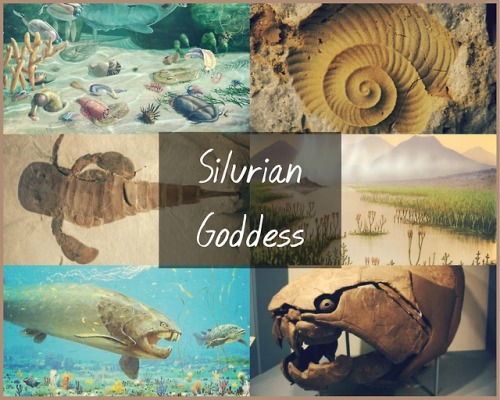
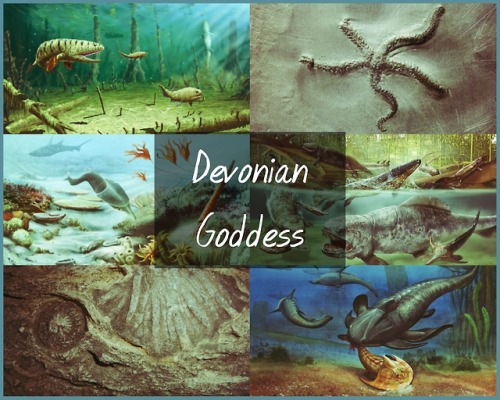
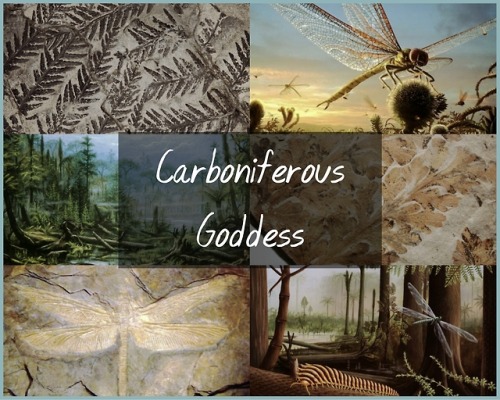
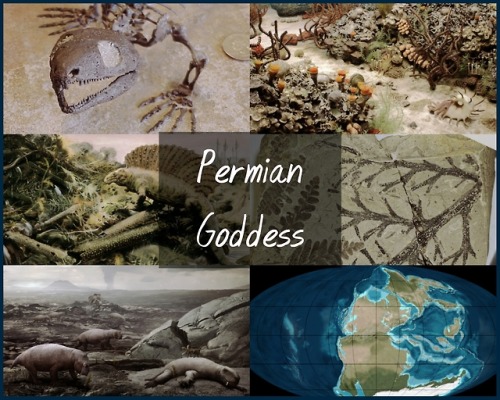
Phanerozoic Eon Goddesses Moodboards (1/3)
Paleozoic Era: Goddesses of Early Life
Spectroscopic Observations of The Atmospheres and possibly even The Surfaces of Extrasolar Planets and Extrasolar Satellites.

ESA’s next science mission to focus on nature of exoplanets
The nature of planets orbiting stars in other systems will be the focus for ESA’s fourth medium-class science mission, to be launched in mid 2028.
Ariel, the Atmospheric Remote‐sensing Infrared Exoplanet Large‐survey mission, was selected by ESA today as part of its Cosmic Vision plan.
The mission addresses one of the key themes of Cosmic Vision: What are the conditions for planet formation and the emergence of life?
Thousands of exoplanets have already been discovered with a huge range of masses, sizes and orbits, but there is no apparent pattern linking these characteristics to the nature of the parent star. In particular, there is a gap in our knowledge of how the planet’s chemistry is linked to the environment where it formed, or whether the type of host star drives the physics and chemistry of the planet’s evolution.
Ariel will address fundamental questions on what exoplanets are made of and how planetary systems form and evolve by investigating the atmospheres of hundreds of planets orbiting different types of stars, enabling the diversity of properties of both individual planets as well as within populations to be assessed.
Observations of these worlds will give insights into the early stages of planetary and atmospheric formation, and their subsequent evolution, in turn contributing to put our own Solar System in context.
“Ariel is a logical next step in exoplanet science, allowing us to progress on key science questions regarding their formation and evolution, while also helping us to understand Earth’s place in the Universe,” says Günther Hasinger, ESA Director of Science.
“Ariel will allow European scientists to maintain competitiveness in this dynamic field. It will build on the experiences and knowledge gained from previous exoplanet missions.”
The mission will focus on warm and hot planets, ranging from super-Earths to gas giants orbiting close to their parent stars, taking advantage of their well-mixed atmospheres to decipher their bulk composition.
Ariel will measure the chemical fingerprints of the atmospheres as the planet crosses in front of its host star, observing the amount of dimming at a precision level of 10–100 parts per million relative to the star.
As well as detecting signs of well-known ingredients such as water vapour, carbon dioxide and methane, it will also be able to measure more exotic metallic compounds, putting the planet in context of the chemical environment of the host star.
For a select number of planets, Ariel will also perform a deep survey of their cloud systems and study seasonal and daily atmospheric variations.
Ariel’s metre-class telescope will operate at visible and infrared wavelengths. It will be launched on ESA’s new Ariane 6 rocket from Europe’s spaceport in Kourou in mid 2028. It will operate from an orbit around the second Lagrange point, L2, 1.5 million kilometres directly ‘behind’ Earth as viewed from the Sun, on an initial four-year mission.
Following its selection by ESA’s Science Programme Committee, the mission will continue into another round of detailed mission study to define the satellite’s design. This would lead to the ‘adoption’ of the mission – presently planned for 2020 – following which an industrial contractor will be selected to build it.
Ariel was chosen from three candidates, competing against the space plasma physics mission Thor (Turbulence Heating ObserveR) and the high-energy astrophysics mission Xipe (X-ray Imaging Polarimetry Explorer).
Solar Orbiter, Euclid and Plato have already been selected as medium-class missions.
Here’s a good Opinion about: Autism and Aspergers.
Why do people treat autism like it’s such a bad thing? It just means the chemical makeup of your brain is different than others. It’s not that bad and you can learn to live with it. I have it, and I’m just like other people. I have feelings, thoughts, fears, ideas, friends, people I love, and many other things. I’m just a bit more awkward. It’s not that bad.
What is a Yottabyte?
Here’s Some_Thing really interesting to Look at.
A Soviet Arctic Exploration Vehicle with Tracks on it.
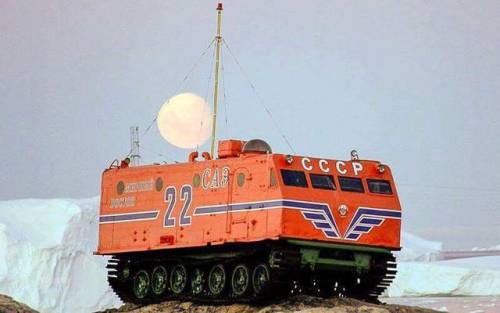



Arctic exploration vehicle Harkovchnka.








